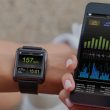RFID takes off at U.S. airports
According to the International Air Transport Association, or IATA, bar-code scanners used in baggage-handling systems capture data accurately only 80% to 90% of the time. If the coded baggage tag gets crumpled, torn or turned away from the scanner — or if something interrupts the optical beam — the read fails. Then the bag gets diverted to a manual sorting station where a human operator determines where it should be sent.
Manual handling costs the airlines money. So does time spent searching for misplaced luggage and returning it to its rightful owner.
That’s why airports and airlines have set their sights on radio frequency identification (RFID) systems to boost data capture accuracy to anywhere from 95% to 99%, with full implementation of the technology saving the airline industry $760 million per year, according to the IATA.
Several U.S. airports already are field testing RFID. This summer, for example, San Francisco International Airport agreed to work on a six-month trial of the technology with Asiana Airlines and Korean Air.
“We hope to start the first quarter of next year,” said Gerry Alley, the airport’s manager of common-use systems. Plans call for using RFID-embedded baggage tags, which are then read immediately upon issue in order to validate the code, he said. Readers installed along the baggage conveyors will continue to read the tags to track each bag’s progress.
The system will use bar code technology as well. “Even if we were completely RFID-capable at our airport, we still handle a very large number of bags that are tagged at other airports and make transfers here,” Alley said. For the test, “We hope to use a very sophisticated device that is actually a combination of RFID antennas and the latest-technology laser reader all in one enclosure.”
The airport is in negotiations with a lead technology vendor and several possible partners, which Alley declined to name. These vendors have offered to install and maintain the equipment at their own expense so they can demonstrate its capabilities, he said.
The test will include luggage on Asiana and Korean Air flights bound for Incheon International Airport near Seoul, South Korea. Asiana already has started testing RFID at six South Korean airports, including Incheon. At some point, San Francisco International plans to execute a memorandum of understanding with Incheon and the two airlines, so the airlines can track a bag’s movements from the moment a passenger checks it in until it reaches the baggage-claim area at the other end.
San Francisco International could eventually expand the test to include other airlines that operate in the section of the terminal where it’s deploying the system, Alley said. Hong Kong International Airport also has an active RFID program, so an airline that flies between San Francisco and Hong Kong would be a natural choice for further implementation, he said, adding that “IATA would function as the intermediary,” doing the recruiting and coordination.
Boston’s Logan International Airport also has RFID testing in the works, although it’s only in the early planning stages, said Dennis Treece, director of corporate security at the Massachusetts Port Authority (MassPort). MassPort officials are considering two kinds of RFID technology: the traditional sort that uses chips in the baggage tags, and a chipless system developed by Inkode Corp.
Chip-based systems pose a problem because of their costs, Treece said. “A penny each would be nice. But it costs 30 (cents) to 50 (cents) each.” If more accurate tracking improves efficiency, the savings that result could bring a return on investment, “but unless we run a study, we can’t show what those cost savings might be,” he said.
While operational efficiency is the main motive for implementing RFID at Logan, better baggage tracking also could have security implications, Treece said. “A bag that is positively identified all through the system, from a security standpoint, is a very good thing. When you have a bag that is suddenly unidentifiable, you have to wonder, where did it come from?”
Inkode’s technology would embed metal particles into the paper when a baggage tag is manufactured, creating a unique pattern in each tag, said Mark Smithers, vice president and chief operating officer of Boston Engineering, an Inkode licensee. When an Inkode reader transmits a radio signal, it detects that pattern in much the same way that a radar beam detects objects in its path.
“It takes a lot of filtering and [digital signal processing] work, but that’s the basic technology,” he said.
Smithers said the chipless RFID technology provides more accurate reads in airports compared to chip-based systems. “It’s not susceptible to the environment of static electricity and gamma rays. The tests they’ve done so far trying to implement RFID at the airports have failed miserably because of these,” he said.
Logan officials are keeping an open mind regarding technologies that might be deployed. “We don’t have any favorites here,” Treece said. “If it’s a promising piece of technology, we’ll put it through its paces,” as long as it meets MassPort’s other requirements, such as legality and customer acceptance.
Legal considerations and customer acceptance also will play a major role in whether MassPort decides to apply RFID in another context — on passengers’ boarding passes. “That would be the next step,” assuming it’s possible to read the ID at a sufficient distance, Treece said.
In Las Vegas, airport officials already have placed a big wager on RFID, moving well toward their goal of using the technology to sort and track 100% of outbound bags. “I would say we’re in the ballpark of the 50% mark, maybe a little beyond that,” said Samuel Ingalls, assistant director of aviation, information systems at McCarran International Airport.
McCarran has taken over responsibility for baggage sorting from its airline tenants. As part of a major project to construct six new buildings on the property, including a new baggage-handling infrastructure, McCarran is implementing an RFID system. The first tags with embedded chips started rolling past readers a little more than a year ago. As of late September, the RFID system was handling bags for five airlines. Because the list includes the airport’s largest carrier, Southwest Airlines, the five together account for about half of McCarran’s outbound passengers.
Although the progress of the RFID implementation hinges on the pace of the overall construction, officials at McCarran expect to complete the implementation soon. “If not right around the turn of the year, then in the first quarter of next year we should, roughly, have everything online,” Ingalls said.
The airport originally contracted with Matrics to supply the RFID hardware, chips and baggage tags. But Symbol Technologies acquired Matrics in 2004, and this September Motorola announced its intention to acquire Symbol for nearly $4 billion (MRT, October 2006, page 8).
Ingalls agreed that RFID chips are more expensive than he’d like them to be. “However, when we looked at the cost versus the benefit, we found that it was at least a break-even situation, if not better, right now. And as the chip price drops in the future, then we and our carriers will realize some significant benefits,” he said.
Another point in favor of RFID is that installation costs are “magnitudes less expensive” compared with an optical system, according to Ingalls. Bar-code readers used in luggage-handling systems involve “little optical laser beams positioned all over the place. It looks like kind of a laser beam city,” he said. They also need constant maintenance because a coat of dust on the lens can degrade the read rate, and that upkeep adds to the cost. “An antenna doesn’t really care if it has a coat of dust on it. It keeps doing its thing.”
Before the August restrictions on liquids in carry-on bags, when the volume of checked luggage shot up by 30% to 40%, McCarran was handling 70,000 bags a day, Ingalls said. If an optical system achieves 90% accuracy, that still means employees must deal with 7000 bags per day by hand. McCarran’s RFID system is about 99% accurate, he said. At that rate, employees would have to handle about 700 bags a day.
“We felt that was a pretty significant factor in weighing against the cost of the chip itself,” Ingalls said.
| Airport | RFID status | Deployment start date | No. of airlines | Technology vendor(s) |
|---|---|---|---|---|
| San Francisco International | Pilot | First quarter 2007 | 2 | To be announced |
| Logan Airport, Boston | Pilot in early planning stages | To be determined | 1 | Inkode and others |
| McCarran International, Las Vegas | Full deployment | Started 2005. To be completed late 2006 or early 2007 | 5 currently | Symbol Technologies |
















